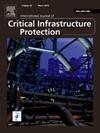Developing a performance assessment tool for building critical infrastructure resilience through Public-Private Partnership in Ghana
IF 5.3
3区 工程技术
Q1 COMPUTER SCIENCE, INFORMATION SYSTEMS
International Journal of Critical Infrastructure Protection
Pub Date : 2025-06-26
DOI:10.1016/j.ijcip.2025.100784
引用次数: 0
Abstract
In recent years, public-private partnership (PPP) has been advocated for as a medium to build critical infrastructure resilience. PPPs provides an added value achieved from greater co-operation among public-private sector entities. Performance measurement is critical to identify the difficulties and challenges that affects the PPP in executing their role in building critical infrastructure resilience. While the PPP concept is not novel, the precise performance measurement of a PPP in critical infrastructure resilience has not been explored yet. Key performance resilience indicators provide an assessment to measure the performance of a PPP set up to build critical infrastructure resilience. Since the area of performance assessment of PPP in critical infrastructure resilience has not been examined yet, this study used quantitative approach to develop a performance index to help quantify the performance of the PPP in critical infrastructure resilience using fuzzy synthetic evaluation method. The performance index developed consists of four major critical performance criteria groupings: these include, Hazard Detection, Continuity plans, Disruptive event detection, Functional Performance. The evaluation model can be used to objectively determine the performance of a PPP in building critical infrastructure resilience.
在加纳通过公私伙伴关系开发一种绩效评估工具,用于建设关键基础设施的复原力
近年来,公私伙伴关系(PPP)一直被提倡作为建立关键基础设施弹性的媒介。公私伙伴关系提供了通过公私部门实体之间的更大合作实现的附加价值。绩效衡量对于确定影响PPP在建设关键基础设施弹性方面发挥作用的困难和挑战至关重要。虽然PPP概念并不新颖,但关键基础设施弹性中PPP的精确绩效衡量尚未得到探索。关键绩效弹性指标提供了一种评估,以衡量为建立关键基础设施弹性而建立的PPP绩效。由于关键基础设施弹性PPP绩效评估领域尚未开展研究,本研究采用定量方法,采用模糊综合评价法,制定绩效指标,帮助对关键基础设施弹性PPP绩效进行量化。开发的性能指标包括四个主要的关键性能标准组:这些包括:危害检测、连续性计划、破坏性事件检测、功能性能。该评估模型可用于客观地确定PPP在建设关键基础设施弹性方面的绩效。
本文章由计算机程序翻译,如有差异,请以英文原文为准。
求助全文
约1分钟内获得全文
求助全文
来源期刊

International Journal of Critical Infrastructure Protection
COMPUTER SCIENCE, INFORMATION SYSTEMS-ENGINEERING, MULTIDISCIPLINARY
CiteScore
8.90
自引率
5.60%
发文量
46
审稿时长
>12 weeks
期刊介绍:
The International Journal of Critical Infrastructure Protection (IJCIP) was launched in 2008, with the primary aim of publishing scholarly papers of the highest quality in all areas of critical infrastructure protection. Of particular interest are articles that weave science, technology, law and policy to craft sophisticated yet practical solutions for securing assets in the various critical infrastructure sectors. These critical infrastructure sectors include: information technology, telecommunications, energy, banking and finance, transportation systems, chemicals, critical manufacturing, agriculture and food, defense industrial base, public health and health care, national monuments and icons, drinking water and water treatment systems, commercial facilities, dams, emergency services, nuclear reactors, materials and waste, postal and shipping, and government facilities. Protecting and ensuring the continuity of operation of critical infrastructure assets are vital to national security, public health and safety, economic vitality, and societal wellbeing.
The scope of the journal includes, but is not limited to:
1. Analysis of security challenges that are unique or common to the various infrastructure sectors.
2. Identification of core security principles and techniques that can be applied to critical infrastructure protection.
3. Elucidation of the dependencies and interdependencies existing between infrastructure sectors and techniques for mitigating the devastating effects of cascading failures.
4. Creation of sophisticated, yet practical, solutions, for critical infrastructure protection that involve mathematical, scientific and engineering techniques, economic and social science methods, and/or legal and public policy constructs.
 求助内容:
求助内容: 应助结果提醒方式:
应助结果提醒方式:


